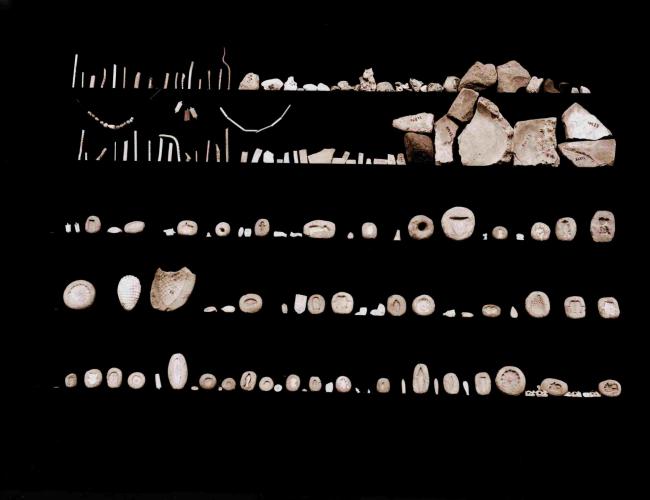The Analysis of Glass Production Debris from Petrie's Excavation
Sir Flinders Petrie’s excavations at the site of Tell el-Amarna, Egypt (1891-92) uncovered a large amount of glass debris and production waste which demonstrated the existence of a glass industry in Egypt as early as the 14th c.BC. This research project examined and analysed the debris currently housed at the Penn Museum. Project Director: Vanessa Muros
| Sir Flinders Petrie’s excavations at the site of Tell el-Amarna, Egypt (1891-92) uncovered a large amount of glass debris and production waste which demonstrated the existence of a glass industry in Egypt as early as the 14th c.BC. Through the combination of archaeological and textual evidence found at the site, Amarna has emerged as an early glass production center that played an important role in manufacture and trade of vitreous materials across the Eastern Mediterranean. This project expands on a pilot project conducted in 2016 on a small group of glass working debris at the Penn Museum. By increasing the number and types of glass production debris studied, and applying different types of scientific techniques to the analysis of the material, the goals of this project were see if it was possible to determine whether these finds represent physical evidence of primary glass making in order to add to the current body of data regarding glass production at the site and the Late Bronze Age overall. |
Project Details
Location: United States, Northern America, Americas
Organiser(s):
University of California Los Angeles (UCLA)
Project partner(s): Getty Conservation Program, Cotsen Institute of Archaeology
Funder(s):
American Research Center in Egypt-Antiquities Endowment Fund
Funding received: $11,500
Commencement Date: 10/2017
Project Status: Completed
Project owner? Update this project





